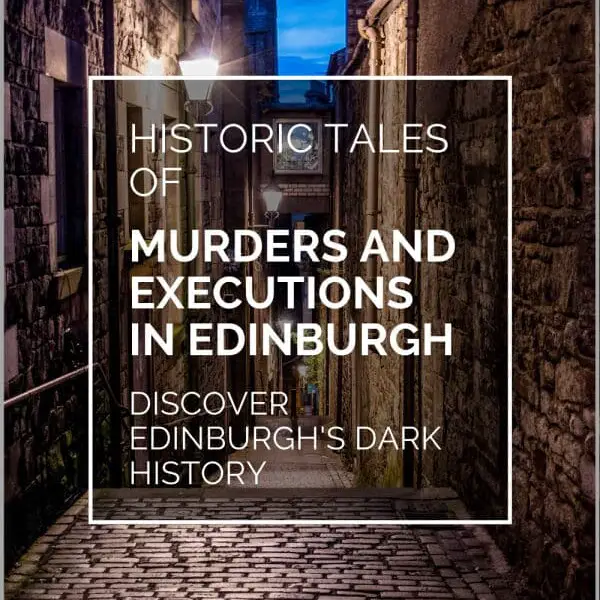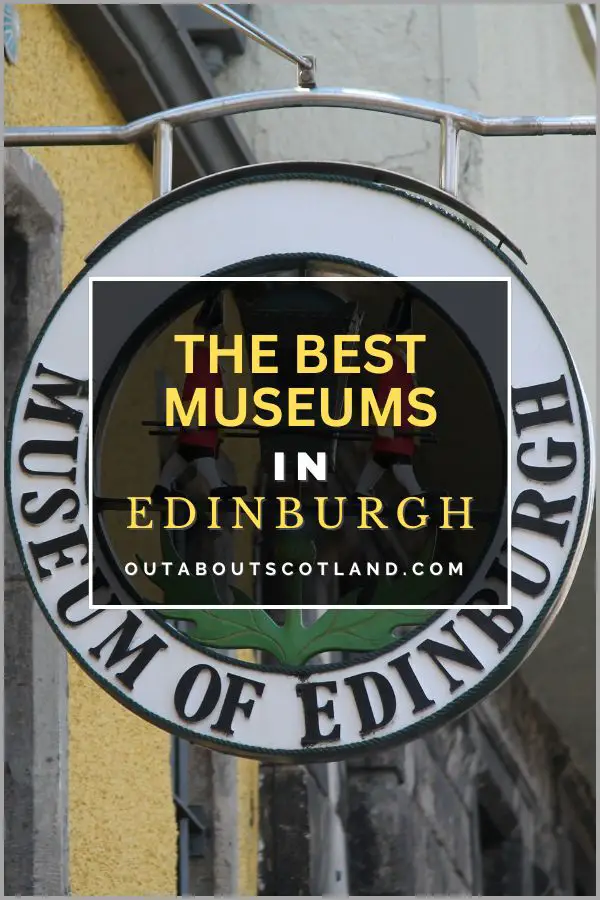Discover the dark and macabre history of Scotland’s most atmospheric city in this article, which delves into some of Edinburgh’s most famous murders and executions that have passed into folklore, from Maggie Dickson to Burke and Hare.

The Story of Half-Hangit Maggie

Maggie Dickson, or ‘half-hangit Maggie, as she became known, was a fishwife who was tried and convicted for the murder of her newborn baby. Well-known at the time for being a promiscuous troublemaker, she was rumoured to have engaged in a passionate affair with a much younger man in 1723.
Shortly after the affair ended, an Edinburgh fisherman reported that he had found the drowned, naked body of a newborn baby dumped on the banks of the River Tweed, and fingers of suspicion were pointed at Maggie.
It didn’t take long before the Edinburgh courts found her guilty, and she was sentenced to death. But by this time, the story of the mother who had killed her newborn son had become big news in the city, so huge crowds congregated in the Grassmarket to watch her public execution.
Maggie was led crying and pleading in front of the roaring crowd to the hangman’s noose, but her desperate screams for mercy fell on deaf ears as she was dropped through the gallows floor. As she fell, the full weight of her body snapped her neck and she jerked and twisted uncontrollably in a dance known as ‘the hangman’s jig’.
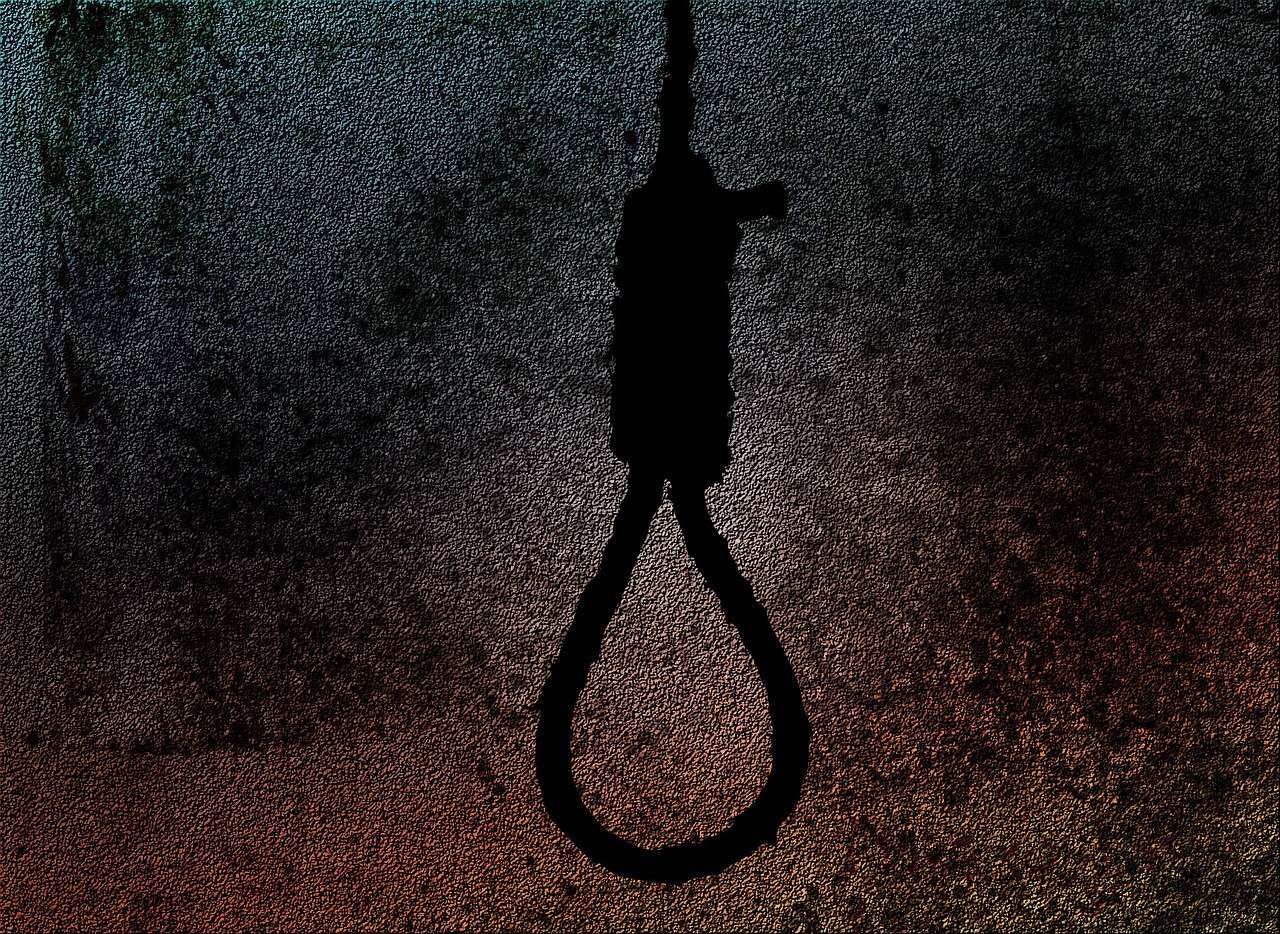
While many of the condemned in Edinburgh would have their tearful families pull down on their legs to make the agonising deaths quicker, Maggie had no one to help, so she danced the jig for several minutes until her twitching body finally stopped moving.
After the required 30-minute wait, her body was cut down and she was confirmed dead by the attending doctor, at which point she was unceremoniously thrown into a coffin and loaded onto a cart to be taken to the local graveyard.
As the cart trundled through the streets of Edinburgh’s Old Town, two passing joiners heard frantic banging and screeching coming from inside the coffin. They immediately set to work to free the person trapped inside, but when they broke it open, to their astonishment, the gasping Maggie Dickson miraculously rose up and howled, terrifying all who saw her.
As the law officials had already recorded that Maggie was dead, they had no choice but to set her free with a full pardon.
Whether her resurrection was a case of divine intervention or an incorrect medical diagnosis, we shall never know. But we do know that she lived on for another 25 years after she was ‘executed’ on the gallows, and Half-hangit Maggie became the infamous owner of an ale house until her final, non-reviving death in 1753.
Swift Justice in the Old Town

The punishment meted out to poor Robert Henderson in 1584 is evidence that justice was swift and brutal in earlier times.
Robert was only in his early teens when he managed to accidentally set fire to his father’s house after lighting a candle one evening, with the flames burning the building to the ground in a raging inferno. Luckily for the rest of the city, although most of the buildings nearby were of wooden construction, none caught fire.
However, fearful of his father’s revenge, Robert ran away in an attempt to evade punishment, but the angry residents of the city weren’t in the mood to let him escape justice so easily. A search party was quickly sent out which managed to capture Robert on the same day, and before long he was back in the city, ready for sentencing.
With Edinburgh’s angry mob shouting outside the courtroom, the final verdict was decided quickly, and a brutal punishment was devised. Poor Robert could barely have understood what was happening as he was thrown into prison and then taken back out a few hours later to serve his sentence – burning at the stake.
In this punishment, prisoners were tied to an upright stake that had a thick carpet of dried wood surrounding it. The wood was set alight, and the unfortunate victim was left to perish in the inferno, unable to escape the overpowering heat and the smell of their own burning flesh.
It would have been a terrifying and excruciating death for the teenager who was unlucky enough to have simply had an accident with a candle. But in some ways, Robert Henderson could count himself lucky that he wasn’t subjected to another form of execution that the lawmakers of Edinburgh had conjured up.
Edinburgh’s Terrifying Execution Methods

Although the main execution method in Edinburgh was being hanged at the gallows, for a time the city also used a machine very similar to the French guillotine, known locally as ‘The Maiden’. It consisted of an oak frame that held an iron blade with a lead weight attached and worked in a similar fashion to its French equivalent.
The device was used between 1564 and 1710, and over the course of those 145 years it claimed the lives of 150 people. You can still see it today by visiting the National Gallery of Scotland.
Another punishment was the ‘breaking wheel’, a torture device that was recorded as being used at Edinburgh’s Mercat Cross in 1591. The wheel was a particularly cruel execution method that consisted of a simple waggon wheel with wooden spokes inside it.
The condemned were lashed to the wheel and beaten to death with cudgels, with the gaps between the spokes allowing the unfortunate victim’s bones to give way and break in multiple places. Death with the wheel was slow and incredibly brutal even for those times, but thankfully it was rarely used in Scotland as hanging and drowning were the preferred methods of enacting justice.
Drowning was predominantly used on women who were accused of being witches, with the accused tied to a chair and lowered into the Nor Loch, the body of water that was near Edinburgh Castle before it was drained and turned into Princes Street Gardens.

The ‘witch’ in this punishment would do one of two things: float or drown. If she floated, she was confirmed as a witch, at which point she would be tied to a stake and burned alive. If she sank and drowned, she was confirmed to be pure, although that wouldn’t have been much consolation to her grieving family. Either way, the women of Edinburgh would have been permanently fearful of being suspected of witchcraft.
If you want to see evidence of how scared the women were of being called witches, you only need to walk down the Royal Mile and take a look at the old fountain near John Knox’s House.
You’ll see the step there is worn away on the left side, while the right side is almost unmarked. The reason for this is that using the left hand was believed to be a sign of the devil, so when the housewives of the day went to get water, they rested their left foot on the step for balance while they pumped away with their right hand.
The Infamous Grave Robbers of Edinburgh
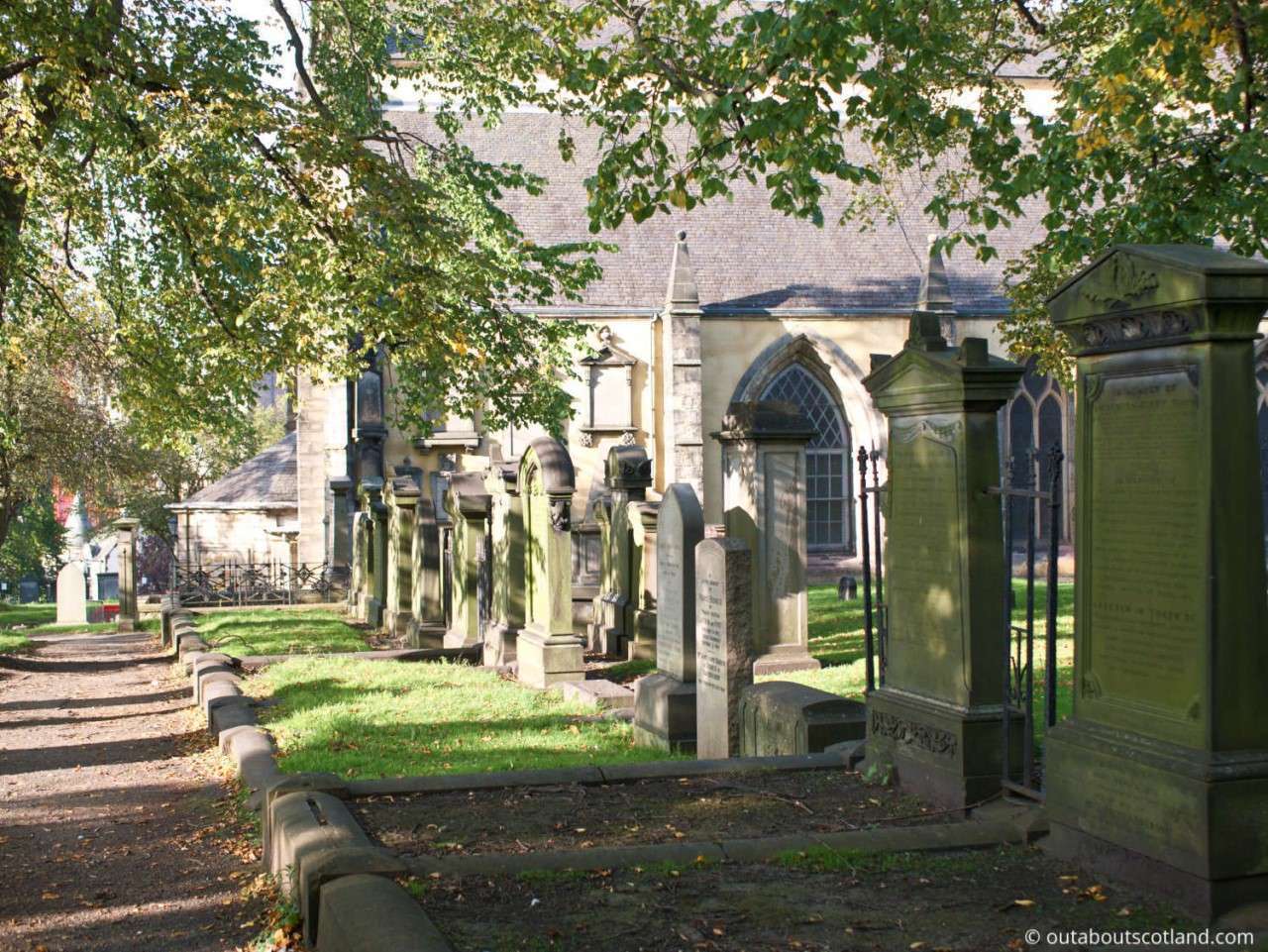
This story is arguably the most famous tale of murder in Edinburgh, and it’s been retold countless times in newspaper articles and even had a Holywood movie made about it. The gruesome tale revolves around Edinburgh’s 19th-century body snatchers, and it’s a story that still fascinates visitors to this day.
In 1828 the infamous William Burke and William Hare carried out a series of grisly murders in an attempt to make some easy money in a crime spree that shocked the nation. At the time, Edinburgh was becoming the foremost centre of medicine in Europe, with educated men coming from far and wide to pay large sums of money to receive the medical training that would one day turn them into fully qualified doctors.
Unfortunately for the universities, the only way they could teach the inner workings of the human body was to dissect the corpses of the recently deceased, and with such a large demand these corpses were becoming hard to find. It was at this time that Burke and Hare came up with their devious scheme.
If they could sell newly deceased bodies to all the medical universities in the city they could make a quick profit, and with Edinburgh’s already notoriously high crime rate they’d be able to get away with killing a few people without having to worry about getting caught.
William Burke was a giant of a man with powerful arms and unusually large hands, which enabled him to commit his murders using a method we now call ‘burking’. In order to commit murder without leaving any trace of injury, Burke would simultaneously cover the nose and mouth of his victim with one giant hand until they suffocated to death, while Hare kept a lookout.
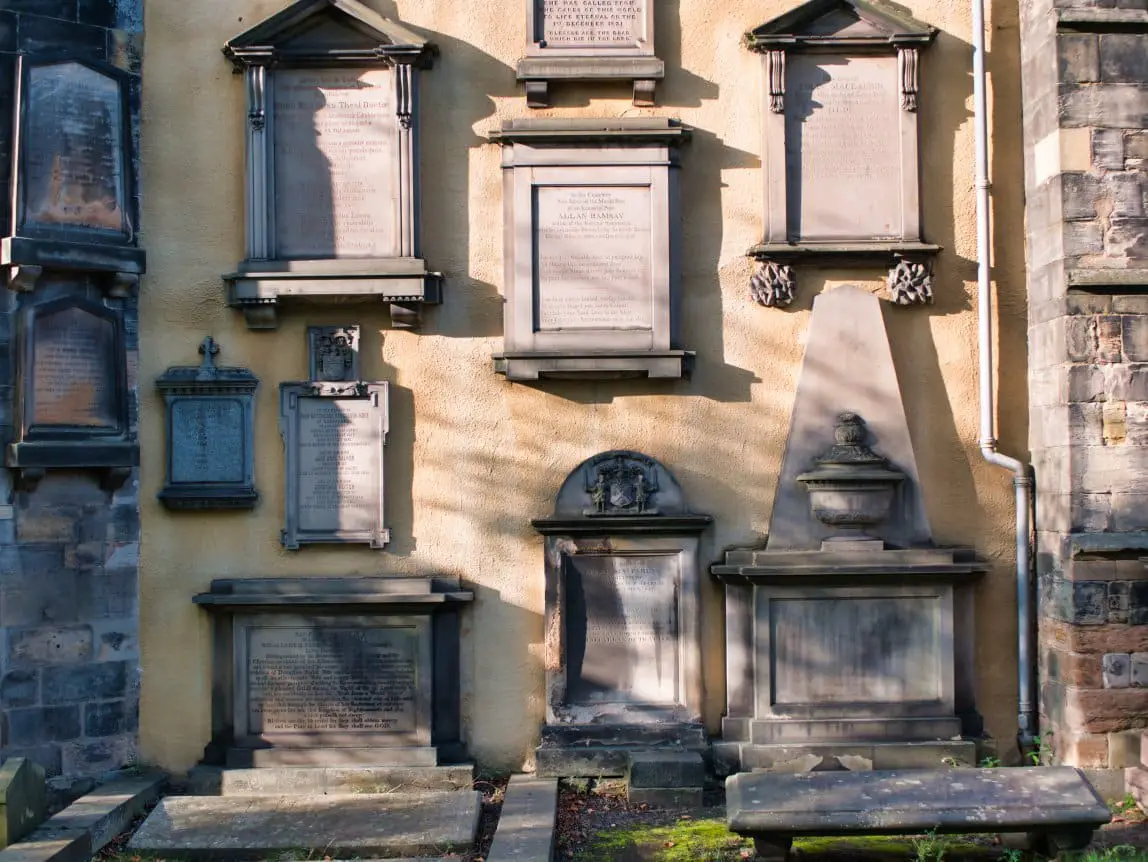
The duo successfully managed to sell the bodies of several victims, but when their murderous spree came under the scrutiny of an ambitious police inspector, Burke and Hare resorted to digging up graves and stealing the decaying bodies instead. The number of graves they dug up became such a problem that grieving families had to resort to barricading their loved ones behind iron bars to prevent them from being exhumed.
You can see evidence of the precautions Edinburgh took to protect the dead at Greyfriars Kirk and Canongate Kirk, which became Burke and Hare’s favourite grave-robbing sites. Take a look at the larger tombs and you’ll see iron security bars and grates covering the entrance, preventing anyone from getting inside.
Thankfully, their murderous spree didn’t last, and they were eventually caught, convicted, and found guilty of murder, for which only Burke was executed. While Hare was released from custody in 1829, Burke was publicly hanged the same year in Edinburgh, and his body was donated to medical science so that his skeleton could be publicly displayed in remembrance of his atrocious crimes. Hare, meanwhile, fled to England, where he died in poverty and anonymity.
Saint Giles and the Edinburgh Rioters
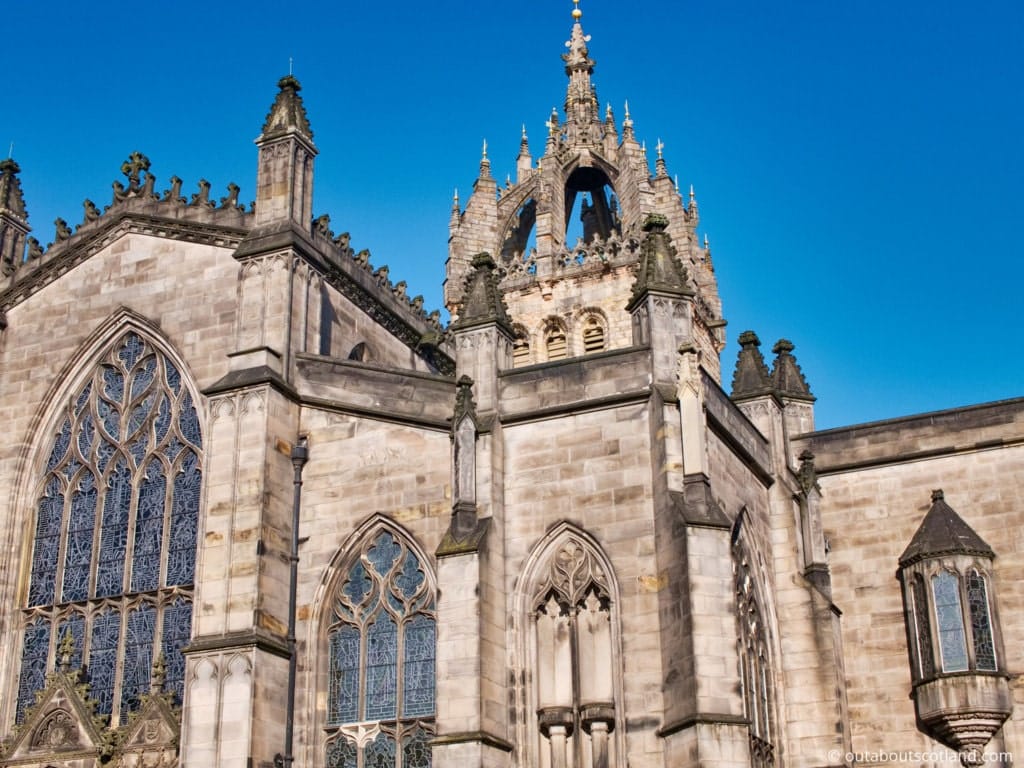
You might not have heard of Saint Giles other than a reference to him when you visit St. Giles Cathedral on Edinburgh’s Royal Mile, but he’s actually the patron saint of the city. Legend has it that St. Giles was a 7th-century Greek hermit who made his home in the vast forests of France where he befriended many wild animals while living a simple life in devotion to God.
One story about the saint is that the king’s hunters accidentally shot an arrow into him as they were hunting wild deer, and although he was not killed, St. Giles was seriously injured, yet he didn’t complain or ask for compensation. The king was so impressed by St. Gile’s humility that he built a monastery for him, and due to his injuries, he eventually became a patron saint to all disabled people.
The history of St. Giles Cathedral is in complete opposition to its patron saint, and throughout the years it has been the focal point for many of Edinburgh’s riots. Perhaps the most famous uprising that centred around the cathedral was the religious conflict that spread out from the capital city and across Scotland in the 1600s.
At this time, the English King Charles I had decreed that all his people should be united under one religion and one Bible, and without any consultation with the people of Scotland, Charles introduced his new Book of Prayer on July 23rd, 1637. However, the people of Edinburgh were not going to be so quick to obey the commands of an English king, and as soon as the first words from the book were spoken in St. Giles Cathedral, a riot broke out amongst the congregation.
Legend has it that the riot started when a marketplace seller became so enraged with the new Book of Prayer that she picked up a stool and hurled it at the Dean of Edinburgh’s head. This was a signal for the rest of the congregation to rise up against the city councillors, and they quickly turned into a frenzied mob.
After violently beating the city officials half to death, the rioters spilled onto the streets where it became impossible to police them, and hundreds of people joined together to tear the city’s Old Town apart. While the riot eventually ended, the anger behind it spread outside of Edinburgh until it grew into what became known as the Bishops Wars, which in turn contributed to the civil wars that eventually tore through all three kingdoms of England, Scotland, and Ireland.
Although the Bisphop’s Wars had low casualties, with approximately 1,000 deaths on the sides of the English and Scottish, the Wars of the Three Kingdoms changed the face of Britain forever, and an estimated 100,000 soldiers died in the conflict along with another 127,000 civilians.
The Murder of the Covenanters at Rullion Green

It’s almost impossible to believe that the peaceful Pentland Hills just outside of Edinburgh were once the site of one of the most influential battles in Scotland’s religious history. The Pentland Uprising of 1666 is significant because it was the first time the Covenanters were able to put together a force that could rebel against the laws that King Charles II had imposed on them.
The Covenanters were a Scottish religious movement that defiantly objected to the new style of worship that the king was forcing on them. At the time, over 400 Covenanter ministers had been ejected from their churches, and further laws were being created to stamp out any further Presbyterian ministries from being formed.
This led to a great deal of unrest with the Covenanters, which culminated in a battle on November 28, 1666, when a band of 900 Covenanter rebels formed on Rullion Green in the Pentland Hills to attack over 3,000 British government soldiers.
The sheer size of the numbers on the government side, coupled with the fact that many rebels were non-military farmers, led to a crushing defeat for the Covenanters, who fled across the boggy Pentland marshes in a bid to escape punishment. Those who escaped the massacre on the battlefield subsequently found themselves trapped in freezing-wet conditions and either drowned in the marshland or were captured and subjected to torture and execution by the pursuing government soldiers.
The troops of General Tam Dalziel killed over 50 Covenanters in total, and 15 of them underwent the most brutal executions that Edinburgh had ever seen. The method of execution involved hanging the victim by their neck almost to the point of death, before cutting them open from the chest to the stomach and tearing out their insides. The body would then have its arms and legs cut off and would be beheaded before being publicly displayed as a warning to others.
As an additional warning to other rebels, some of the Covenanter men were subjected to the boot, a torture device that was strapped onto their legs, with wooden boards that were tightened so hard that the bones snapped.
The pain these men must have gone through is difficult to imagine, but thankfully, such torture devices were phased out over the course of the next century. Today, a single headstone memorialises the fate of the failed uprising at the edge of a small woodland on Rullion Green.
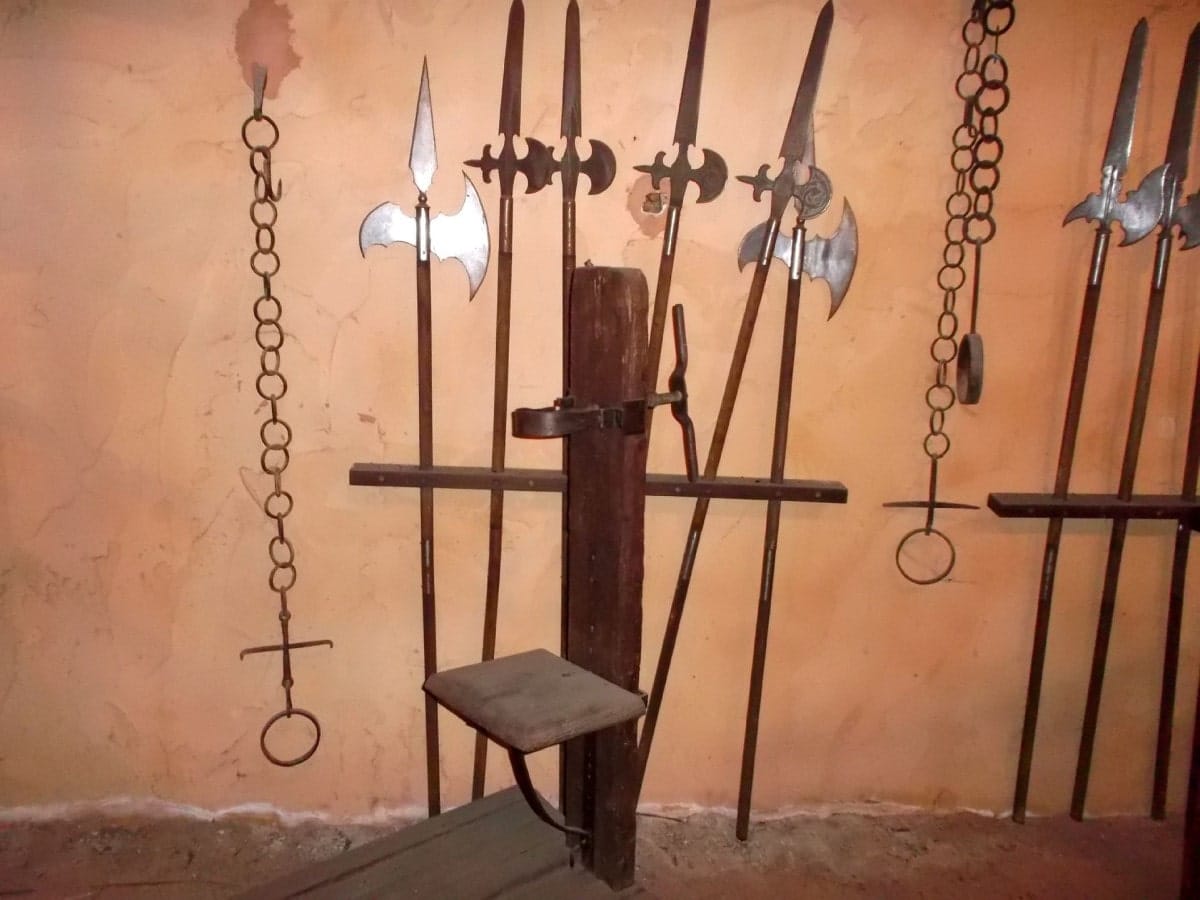
Further Reading
- If you want to visit Rullion Green and the Pentland Hills take a look at this article: Guide to the Pentland Hills – From Flotterstone to Turnhouse Hill.
- If you’d like to research modern Edinburgh death records, you’ll find details on the National Records of Scotland website.
- For details of the 1977 World’s End murders – the most famous Edinburgh murder case in living memory – you’ll find a complete explanation on Wikipedia.
- This article – Ultimate Guide to the Most Haunted Places in Scotland – has information about ghost sightings across the country.
- If you’d like to follow in the footsteps of Edinburgh’s infamous graverobbers, I recommend booking a guided tour with Get Your Guide.
Where did executions take place in Edinburgh?
There were several sites in Edinburgh where executions took place, namely beheadings at Edinburgh Castle, hangings in the Grassmarket, and drownings in the Nor Loch. The Grassmarket was the main location for executions which were carried out between 1660 and 1784 before the location was moved to the west end of the Luckenbooths.
Who was executed in Edinburgh?
People from all walks of life were executed in Edinburgh over the years, from Covenanters (a persecuted religious group) to thieves and heretics. The most famous executions were of William Burke (of the Burke and Hare graverobbers) in 1829 and William Douglas, the 6th Earl of Douglas who was beheaded at Edinburgh Castle in 1440.
When was the last execution in Edinburgh?
The last execution in Edinburgh was carried out on the 23rd of June 1954 when George Robertson was taken to the gallows after admitting to acts of murder and attempted murder of his own family.
Where was the last person hung in Edinburgh?
The last execution in Edinburgh took place in 1954 but the last public execution was conducted on a man named George Bryce at the corner of George IV bridge and the Lawnmarket in 1864. Three brass plates in the pavement mark the location of the gallows used in the hanging.

